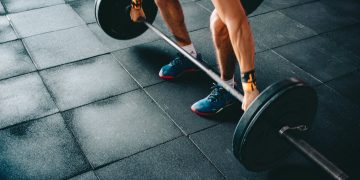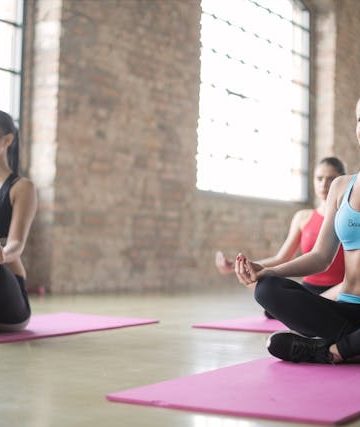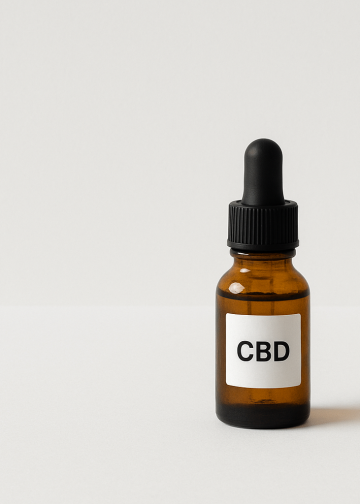Key Takeaways
- Training like an athlete is not just for professionals—it’s a mindset and lifestyle anyone can adopt.
- Focus on strength, conditioning, speed, agility, and flexibility to build a balanced, high-performing body.
- Nutrition is key: fuel with protein, healthy carbs, and fats, while staying hydrated and timing meals effectively.
- Recovery is just as important as workouts—prioritize sleep, rest days, and active recovery.
- A structured weekly routine helps balance intensity with recovery.
- Adopting athlete-like habits such as consistency, accountability, and adaptability can transform both fitness and lifestyle.
Training like an athlete isn't just for the pros who compete in stadiums. It's something anyone can embrace! Let’s teach you how to train like an athlete in this blog.
What Is An Athlete’s Mindset?
Before you jump into weights and workouts, remember that it all starts in your head. Athletes don’t just go through the motions; they prepare themselves mentally. They know how crucial discipline, consistency, and resilience are to their success.
- Goal-Oriented Thinking: Every athlete has a specific goal in mind— be it to run faster, lift heavier, or perfect a skill. You should adopt the same mindset. Set SMART goals (Specific, Measurable, Achievable, Relevant, Time-bound). For instance, aim for “Run 5K in under 25 minutes within 8 weeks” instead of just saying “get fit.”
- Consistency Over Intensity: It’s not about nailing one epic workout. It’s about showing up and putting in the effort day after day. Athletes thrive on their routines.
- Growth Over Comfort: They welcome discomfort as a part of their growth journey. That extra sprint, the heavy lift, or pushing through fatigue not only builds muscles but also strengthens character.
Building An Athlete’s Body: A Complete Guide
Strength training lays the groundwork for any athlete. Exercises like squats, deadlifts, bench presses, and pull-ups work multiple muscle groups at once, building functional power instead of just isolated strength. To amp things up, adding explosive moves like kettlebell swings or box jumps helps train both speed and force, which are crucial for top-notch athletic performance.
Next on the list is conditioning and endurance. Athletes need their lungs and muscles to keep going strong, even under pressure. High-intensity interval training (HIIT) is fantastic for boosting cardiovascular capacity and stamina, while steady-state cardio, like running or cycling, helps develop long-lasting endurance. Plus, sport-specific drills, such as shuttle runs or agility cones, not only improve fitness but also sharpen skills.
Speed and agility are what set athletes apart from the average gym-goer. By incorporating sprint intervals, ladder drills, and plyometric exercises, you can enhance reflexes and quickness. This not only elevates performance but also reduces the risk of injuries by improving coordination.
Don’t forget about mobility and flexibility, which are just as vital. Dynamic stretches before workouts get your muscles ready for those explosive movements, while static stretching and foam rolling afterward aid recovery and help prevent stiffness. Without good mobility, all that strength and speed can lose their edge.
In the end, building an athlete’s body is all about finding balance. It’s not just about chasing the biggest biceps or the longest runs in isolation; it’s about weaving together various elements into a well-rounded training approach.
A Complete Nutrition Guide To Fuel Like An Athlete
Macronutrients
- Protein: This is crucial for repairing and building muscle. Try to focus on lean options like chicken, fish, eggs, beans, lentils, and tofu.
- Carbohydrates: They serve as your main source of energy for performance. Opt for whole grains, fruits, and veggies to keep your energy levels steady.
- Fats: These are important for hormone production and recovery. Choose healthy fats such as nuts, avocados, and olive oil.
Micronutrients
Vitamins and minerals are essential for boosting energy and aiding recovery. Make sure to include plenty of leafy greens, vibrant veggies, nuts, and seeds in your diet to cover all your nutritional bases.
Hydration
When you're dehydrated, your performance takes a hit. So, keep sipping on water throughout the day, and don’t forget to replenish those electrolytes if you’re sweating a lot.
Timing
Aim to have a balanced meal about 2–3 hours before your training session.
And don’t forget to refuel with some protein and carbs within 45 minutes after your workout.
The Secret Weapon Of Athletes: Recovery
Getting a solid 7 to 9 hours of quality sleep is absolutely essential.
Sleep plays a crucial role in muscle repair, memory enhancement, and keeping our hormones in check.
Active Recovery
Engaging in light activities like walking, yoga, or swimming can boost circulation without putting too much strain on your body.
Rest Days
Make sure to carve out at least 1 to 2 rest days each week.
Remember, recovery isn’t about being lazy, it’s all about gearing up for your next challenge.
Recovery Tools
Professional athletes often rely on ice baths, compression gear, and massage guns for recovery.
But at home, you can achieve great results with foam rolling and stretching as effective alternatives.
Here’s A Structured Training Week
Here's a week-long workout plan to keep you on track:
- Day 1: Focus on strength training for your lower body, plus some mobility work
- Day 2: Get your heart pumping with conditioning through HIIT and agility drills
- Day 3: Shift gears to upper body strength training and core stability exercises
- Day 4: Take it easy with active recovery—think yoga, swimming, or stretching
- Day 5: Amp up your game with speed and power training, including sprints and plyometrics.
- Day 6: Dive into full-body functional training along with some sport-specific drills.
- Day 7: Wrap up the week with a rest day or light activities like walking or foam rolling.
This routine strikes a great balance between intensity and recovery, helping you build a well-rounded fitness foundation.
What Are The Lifestyle Habits Of Athletes?
- Sticking to a Routine: They maintain consistent sleep, meal, and training schedules.
- Minimizing Distractions: They steer clear of excessive alcohol, junk food, and late nights because those don’t align with their goals.
- Having Accountability: Many athletes work with coaches or teams. For you, teaming up with a workout buddy or using a fitness app can provide that extra push.
- Being Adaptable: They modify their plans based on how they’re performing, any injuries, or changing goals, rather than rigidly following a single approach.
Training like an athlete means living with purpose.
FAQs
Do I need to be a professional to train like an athlete?
Not at all! You don’t have to be a pro to train like one. It’s really about sticking to a structured workout routine, fueling your body with the right foods, and making recovery a priority. Anyone can take these principles and use them to boost their fitness, strength, and overall health.
How many hours a day should I train to build an athlete’s body?
You don’t have to spend all day in the gym. Most athletes typically train for about 1 to 2 hours a day with a specific goal in mind. If you’re not a professional, aiming for 4 to 6 well-planned sessions each week, along with good rest and nutrition, is more than enough!
Conclusion
By blending strength, endurance, agility, and resilience, you can truly tap into your body’s full potential. Begin with small steps, keep at it, and before you know it, you won’t just look like an athlete, you’ll actually live like one!

























